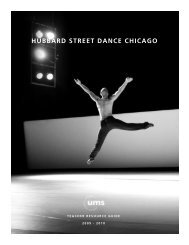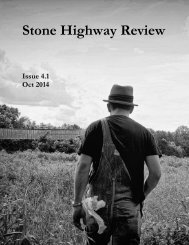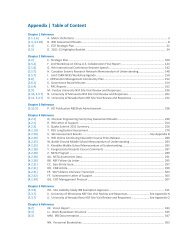Fries
Fries
Fries
Create successful ePaper yourself
Turn your PDF publications into a flip-book with our unique Google optimized e-Paper software.
Charles C. <strong>Fries</strong>, linguistics and corpus linguisticsThe conclusion that he drew from these facts was that there was no time in thehistory of written English when there was a single coherent grammatical system.16 Later <strong>Fries</strong> and Pike (1949:29) expressed a similar view concerning thephonology of a language in the following terms:The speech of monolingual native speakers of some languages is comprisedof more than one phonemic system; the simultaneously existingsystems operate partly in harmony and partly in conflict. No rigidlydescriptive statement of the facts about such a language accounts forall the pertinent data without leading to apparent contradictions.3.6 <strong>Fries</strong>’s historical results and probabilities within systemsAs described above, <strong>Fries</strong> was regularly interested in counting the relative frequencieswith which the ‘conflicting contrastive items’ occurred. These countsgave him a feeling as to which of the contrasting elements were, so to speak,normal, and which were unusual. It is interesting that, so far as I can tell, henever took the next step to say that when he found a great difference in the relativefrequencies of two options, that very difference implied that the two optionsexpressed different meanings. That is, he never claimed that the relative frequencywith which an option was used was directly part of its meaning. Clearlymore modern approaches (for example Systemic Functional grammar) take thatstep, and further, they indeed attempt to integrate frequencies into their descriptionsof grammar. (See the comments on frequency in Halliday 2005.)In addition to Halliday’s belief that relative frequencies constitute an importantpart of the description of any system, he has also suggested (2005: 80 and96) that the relative probabilities of the options of any two-term system withinlanguage are likely to center either on options that are roughly equi-probable, oroptions that occur in roughly a 9:1 ratio. <strong>Fries</strong>’s results for the history of Englishprovide both some support as well as some challenges for this suggestion. Asillustrated in Table 4, <strong>Fries</strong> found gradual progressions from expressing a givenstructural relation by using one form to using a different form (for example,from the use of inflections to signal elements of structure in the clause to the useof word order to signal the same elements of structure). The support for Halliday’ssuggestion comes from the fact that the initial stage in his data indicates atwo-term system in which the options are roughly equi-probable. Similarly thefinal stage in his data illustrates a system in which one option occurs roughlynine times more frequently than the other term. Both of these are probabilitiesthat Halliday predicts. However, the stages that intervene between the initial andfinal stages illustrate intermediate probabilities that fall outside of the ranges111








